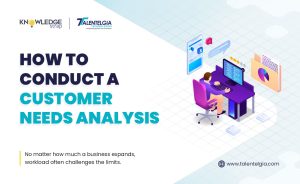In today’s digital age, automation has become an essential component of efficient business operations. However, not all organizations have adopted a rigorous approach to automation, especially in the realm of enterprise IT. While basic automation tasks such as email rules and backups are commonplace, there is still much room for improvement in how businesses approach automation.
In this blog, we will explore the 7 key principles of IT process automation that set apart organizations that have mastered this essential discipline.
From standardization and scalability to transparency and security, these principles provide a roadmap for achieving optimal efficiency, reliability, and flexibility in your IT automation practices.
Now that we’ve provided some additional insights, let’s dive into the 7 specific fundamentals of IT process automation:
- Security
- Scalability
- Modularity
- Resilience
- Visibility
- Auditability
- Reliability
Enterprise-grade IT automation is a critical component of modern business. Disciplined automation forces organizations to rethink the entirety of critical processes, from initial definition to final execution. It encourages them to plan more exceptions, use resources to the fullest, and formalize tasks into assets that can be used over and over again to grow the Business.
On the other hand, there are many things that enterprise IT automation does not do. It doesn’t expose the organization to new risks just to get a task done faster, and it doesn’t tie its functionality to blocks of code that only a few can understand.
Top 7 key principles of IT process automation
- Security
When organizations empower their employees with automation tools, they create opportunities to increase productivity. But they often simultaneously introduce security loopholes. The classic example of this is allowing a user to indirectly access an administrative login to perform a step in the automated process. Other security challenges can be:
- Storing processes in places accessible to more users who should be editing them
- Not establishing strong SoD practices between those who can edit processes and those who can schedule them.
- Not closing connections after completing processes
- Not enforcing strong policies of password management or role-based access control
- Failing to recognize that bots should be governed like human workers
The automation of IT processes superimposes all these Security standards on the processes created. These standards tend not to be the most important when users (Business or IT) are creating a task. However, without them, the value of the automation process is often nullified by security risks.
Remember, if your ROI calculation for IT automation looks like this, you won’t get anywhere: (Automation Benefits) – (Security Risks Generated) = 0
- Scalability
To generate significant returns, automation must be able to scale. An automated process may need to run thousands of times daily, run on hundreds of servers, or provide additional resources. Low-level automation tools often do not take these requirements into account.
Its scalability is usually limited to the resources of its host machine, so when a workflow consumes too much memory or can’t access additional power, it simply stops working.
IT process automation is designed to take advantage of a much broader set of resources to run workloads. You are only limited by the number of resources you can safely access.
- Modularity
Look at the scripts in most organizations and often you’ll find the same steps being written over and over again, sometimes constantly and sometimes seemingly inconsistently. Complete a series of steps to log into a system. That initial set of steps can be repeated for hundreds of tasks. Then one day the password changes and each of those tasks must be edited in order for them to run successfully.
IT process automation allows organizations to create reusable building blocks, such as scripts and login queries so that steps common to many workflows can be changed in one place and then cascaded to all workflows. processes that depend on them.
- Resilience
All IT processes are subject to some degree of disruption from power failures, network connectivity, database and resource crashes. Most amount to minor annoyances, but when a critical task fails, it doesn’t matter. You must do something as well. With low-level automation tools, it’s up to you to react.
However, IT process automation takes into account many of the common disruptions IT teams encounter and allows them to globally apply as many what-if scenarios to workflows so they only need to respond to the most critical issues. serious.
Most process errors can be resolved by trying again: by running a recovery task or by skipping a less essential step. These recoveries are best done programmatically, so as not to take time away from higher-priority projects. IT automation provides numerous child processes to keep tasks and workflows running despite modest infrastructure issues.
- Visibility
Automated tasks require that you trust all the tools that are used to run them. When automation is managed with multiple low-level tools, it tests that trust. Not knowing the status of every task in an environment puts IT teams in a very reactive position; they must trust that tasks are running correctly until things go wrong.
IT process automation provides a centralized view of the status of each task or workflow running on each node, so there are no surprises. Even the most elegantly designed automation schemes encounter some variability.
- Auditability
Even if organizations automate to do more, it doesn’t mean the work is being done by a user with no responsibility. Those automated tasks were created by real users, modified by real users, and scheduled by real users. As anyone in a Regulated Business knows, organizations have a responsibility to record all actions that users take with these important automated processes.
Automated tasks also often contribute to service level agreements (SLAs). If an SLA is missed, it’s essential to be able to break a workflow into its individual steps so you can see what ran, where it ran, and who last modified it.
IT process automation provides logging and auditing functionality that formalizes every process in it. Similar to the way software code provides source control, every change and action within enterprise automation is logged.
Audit logs validate the actions of everyone who touches the master schedule and provide a complete history of how tasks have been executed. As companies implement more automation, execution history increases in value, highlighting bottlenecks and identifying resources that are reaching their limits.
- Reliability
Scheduling a certain task to occur on a regular basis and ensuring that it runs are two very different things. This assurance is one of the factors that distinguishes IT process automation from low-level automation. While it’s easy to determine if a process was successful on a small scale, reliability is a critical factor when multiplied by thousands of processes an organization can automate.
IT automation helps increase resiliency, ensures automated processes finish, and reduces manual intervention and human touch points. If a workflow fails, automatic alerts can be triggered, as well as conditional logic to resolve any errors automatically.
Talentelgia: Your Business Automation Experts – Secure and Efficient Solutions for Automating Your Business Processes At Talentelgia, we specialize in providing secure and efficient business automation solutions to help you achieve and evaluate holistic automation of your IT processes. With the help of our business automation experts, we can help you streamline and automate your business operations, saving you time and money in the process.
To learn more about our IT automation, download our guide Why Should You Use Business Process Automation. In this whitepaper, we explore the key principles and critical pillars of business automation, and how we bring together various technologies to solve your automation challenges.
Trust Talentelgia to be your partner in automating your business processes, and experience the benefits of a streamlined, efficient, and secure operation.







